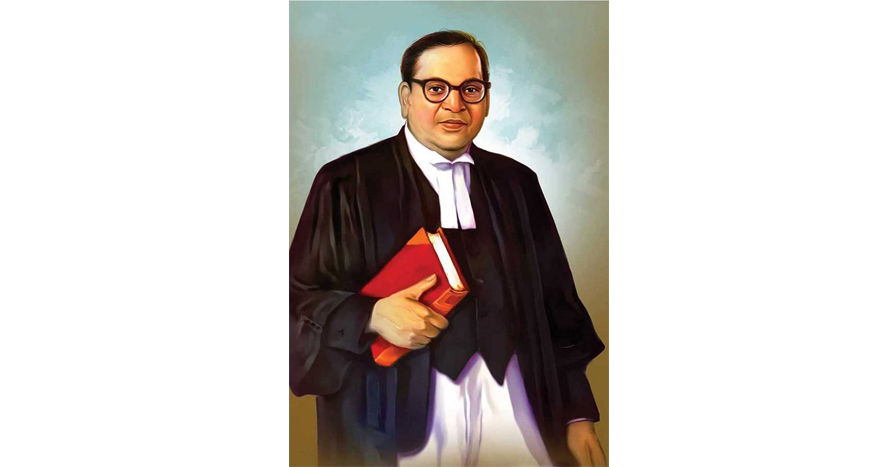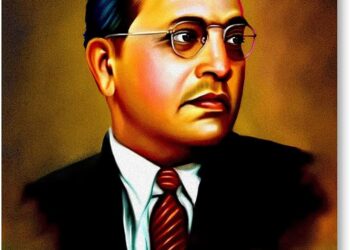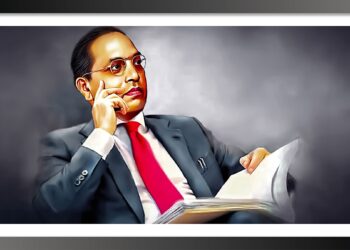Before one tries to know what it is to be an Untouchable one would like to know what is the total population of the Untouchables of India. For this one must go to the Census Report. The first general census of India was taken in the year 1881. Beyond listing the different castes and creeds and adding up their numbers so as to arrive at the total figure of the population of India the Census of 1881 did nothing. It made no attempt to classify the different Hindu castes either into higher and lower or touchable and untouchable. The second general census of India was taken in the year 1891. It was at this census that an attempt to classify the population on the basis of caste and race and grade was made by the Census Commissioner for the first time. But it was only an attempt.
The third general census of India was taken in 1901. At this census a new principle of classification was adopted namely “Classification by Social precedence as recognised by native public opinion”. To this serious opposition was raised by high caste Hindus to the enumeration by caste in the Census Report. They insisted on the omission of the question regarding caste.
This objection did not have any effect on the Census Commissioner. In the opinion of the Census Commissioner enumeration by caste was important and necessary. It was argued by the Census Commissioner that “whatever view may be taken of the advantages or disadvantages of caste as a social institution, it is impossible to conceive of any useful discussion of the population questions in India in which caste would not be an important element. Caste is still ‘the foundation of the Indian social fabric’ and the record of caste is still ‘the best guide to the changes in the various social strata to the Indian Society’. Every Hindu (using the term in its most elastic sense) is born into a caste and his caste determines his religious, social, economic and domestic life from the cradle to the grave. In western countries the major factors which determine the different strata of society viz. wealth, education and vocation are fluid and catholic and tend to modify the rigidity of birth and hereditary position. In India spiritual and social community and traditional occupation override all other factors. Thus where in censuses of western countries an economic or occupational grouping of the population affords a basis for the combination of demographic statistics, the corresponding basis in the case of the Indian population is the distinction of religion and caste. Whatever view may be taken of caste as a national and social institution it is useless to ignore it, and so long as caste continues to be used as one of the distinguishing features of an individual’s official and social identity it cannot he claimed that a decennial enumeration helps to perpetuate an undesirable institution.
This Census of 1901 did not result in fixing the total population of the Untouchables at an exact figure. This was due to two reasons. In the first place no exact tests were applied to determine who is an untouchable. Secondly a class of the population which was economically and educationally backward but not Untouchable was mixed up with those who were actually Untouchables.
The Census of 1911 went a step further and actually laid down ten tests to mark off the Untouchables from those who were Touchables. Under these tests the Census Superintendents made a separate enumeration of castes and tribes who (1) denied the supremacy of the Brahmins: (2) did not receive the Mantra from Brahmana or other recognized Hindu Guru; (3) denied the authority of the Vedas; (4) did not worship the great Hindu Gods; (5) were not served by good Brahmanas; (6) have no Brahmin priests at all; (7) have no access to the interior of the ordinary Hindu temple; (8) cause pollution; (9) bury their dead and (10) eat beef and do not reverence the cow.
The separation of the Untouchables from the Hindus was insisted upon by the Muslims in a memorial to the Government dated 27th January 1910 in which they claimed that their representation in the political bodies of the country should be in proportion to the population of Touchable Hindus and not Hindus as a whole because they contended that the Untouchables were not Hindus.
Be that as it may the Census of 1911 marks the beginning of the ascertainment of the population of the Untouchables. Efforts in the same direction were continued at the Census of 1921 and 1931.
As a result of these efforts the Simon Commission which came to India in 1930 was able to state with some degree of surety that total population of Untouchables in British India was 44.5 millions.
Suddenly, however, in 1932 when the Lothian Committee came to India to investigate the question or franchize for the reformed Legislatures and began its investigation, the Hindus adopted a challenging mood and refused to accept the figure given by the Simon Committee as a true figure of the Untouchables of India. In some provinces the Hindus went to the length of denying that there were any untouchables at all. This is due to the fact that the Hindu had by now realized the danger of admitting the existence of the Untouchables. For it meant that a part of the representation enjoyed by the Hindus will have to be given up by them to the Untouchables.
The Census of 1941 must be left out of consideration. It was taken during the war and it was a sort of a rough measure.
The latest Census is that of 1951. The following figures arc taken from the statement issued by the Census Commissioner. The Census Commissioner gives the population of the Scheduled Castes in India as 513 lakhs.
The total population of India, as shown by the 1951 census is 3,567 Iakhs, excluding 1.35 lakhs, the enumeration records in whose case were destroyed by fire in the Census Tabulation Office at Jullundur.
Out of the total population of 3,567 lakhs, 2,9491akhs live in rural areas and 618 lakhs in the urban areas. The Scheduled Castes in rural areas total 462 lakhs and in urban areas their figures are 51 Iakhs.
Non-agricultural classes for the whole population total 1,076 lakhs, the Scheduled Castes 132 lakhs.
Cultivators of land, wholly or mainly owned, and their dependents total 1.674 lakhs for the whole population, 174 lakhs for the Scheduled Castes.
Cultivators of land, wholly or mainly unowned and their dependants are 316 lakhs for the whole of India. 56 lakhs for the Scheduled Castes. Cultivating labourers and their dependants are 448 Lakhs for the whole of India. 148 lakhs for the Scheduled Castes.
Figures for non-agricultural classes are as follows :
Production other than Cultivation: Total 377 lakhs, Scheduled Castes 53 lakhs.
Commerce: Total 213 lakhs, Scheduled Castes 9 Iakhs.
Transport : Total 56 lakhs, Scheduled Castes 6 lakhs.
Other services and miscellaneous sources: Total 430 lakhs, Scheduled Castes 64 Iakhs.
Out of a total Scheduled Caste population of over 513 lakhs, 114 lakhs live in North India (Uttar Pradesh); 128 lakhs in East India (Bihar, Orissa, West Bengal, Assam, Manipur and Tripura); 110 lakhs in South India (Madras, Mysore, Travancore-Cochin and Coorg); 31 Iakhs in West India (Bombay, Saurashtra and Kutch); 76 Iakhs in Central India (Madhya Pradesh. Madhya Bharat, Hyderabad, Bhopal and Vindhya Pradesh); and 52 lakhs in North-West India (Rajasthan, Punjab. Patiala and East Punjab States Union, Ajmer, Delhi, Bilaspur and Himachal Pradesh).
Source : ‘Dr. Babasaheb Ambedkar : Writings and Speeches’ (Vol. V) Chapter 2- Untouchables – Their Numbers






